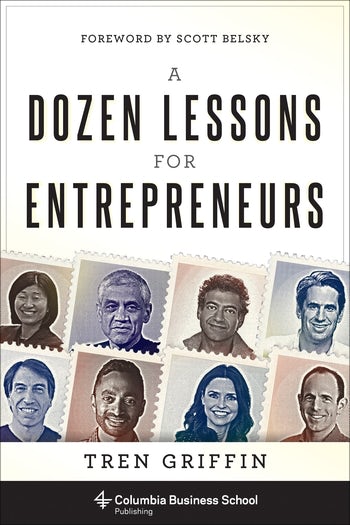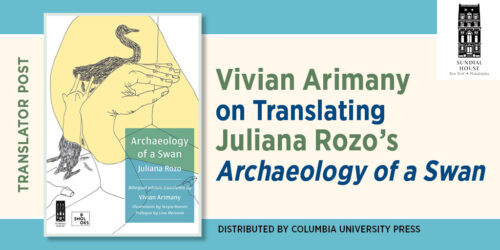Are E-books Good for Poetry? A Post by Siobhan Phillips
The following post is by Siobhan Phillips, author of The Poetics of the Everyday: Creative Repetition in Modern American Verse.
Last month, an AP story about digital publication briefly focused poetry-lovers’ general despair at the future on a specific new problem.
Billy Collins had recently seen his work on a Kindle e-reader, and he didn’t like what he saw. The device broke up lines of his poems, altering stanzaic integrity at whim and changing the shape of the verse. Charting other instances of digital manipulation and other writers’ worries, the article concluded that poetry, as “the most precise and precious of literary forms, is also so far the least adaptable to the growing e-book market.” One more example, it seems, of how the digital age is leaving behind an antiquated habit of verse-reading, and one more way in which poetry needs to be defended from the onslaught of a twenty-first-century marketplace.
Or is it? Those are not the only lesson to take from the problem of Kindle presentation. Somewhere between the mangled lines of e-reader poetry, I would argue, lies a demonstration of how digital reading is moving ahead to places where verse has already been, and of how poetry scholarship could profitably contribute to theories of twenty-first century media.
These contributions stem from the fact, most basically, that poetry has always questioned the naturalism of the printed page. The oral and musical affiliations of verse perpetually worry the troubling line that divides speech and writing, and perpetually reflect thereby on an artwork’s limits, autonomy, and connection to living presence. On the one hand, poetry seems to privilege sound over print, given its emphasis on an originary “voice”: when a novel is read aloud, the spoken words seem to derive from those on the page, but when a poem is spoken, the words seem to antecede ink-and-paper transcription. On the other hand, poetry seems to privilege print over voice, given its emphasis on shape and lineation: think of Apollinaire’s concrete poetry or Susan Howe’s verbal designs. Poetry points out literature’s ambivalent oscillation between what Craig Mod calls “formless content” and “definite content”—between a discourse conveyed without fixed visual shape and a discourse that relies on specific appearance. Poetry shows that literature, like light, is both wave and particle.
With this, poetry shows that neither formless nor definite content need take its shape from the space of any ink-and-paper medium. Prose may fluently assume whatever area is allowed by a page’s white area, thereby rendering the format both universal and unproblematic. But poetry resists such arbitrary limits, thereby acknowledging the page as always somewhat arbitrary. This is the case when a long passage of verse has to be broken and indented on a subsequent line: if you run your eye over some Whitman passages in a printed book, where a good percentage of phrases are probably divided, and then set the same on a big screen with wide margins, in which each clause has ample room to ramble, the difference can change the way you take in the poet’s rhythms.
This is the case, too, when a small line of verse has to be set with more or less isolation in an open field: if you read some of Dickinson’s lyrics in a book, where they tend to be dwarfed by blank surroundings, and then look at a photograph of her fascicles, where handwritten lines occupy almost the entirety of each leaf’s available room, the difference can shift your conception of Dickinson’s power. The edges of a poem are never just the edges of a volume, and with each venture “from the justified line / into the margin,” to use Seamus Heaney’s words, poems point out both justification and marginality. Different poems may exploit print to different extents, but all poems demonstrate the contingency of their mediated presentation.
That contingency seems particularly important at a time when new modes of e-publication have generally maintained the page as a seemingly inevitable mode of reading. The Kindle, for example, doesn’t present a text in the single long file that is possible for content on ordinary computer screens. Instead, the device shows the turning leaves of an e-paper edition. Yet this edition doesn’t reproduce the exact formatting of any actual paper, either, the way a Google-scanned book, for instance, might do. The result is a method that doesn’t quite capitalize on all the benefits of Mod’s “formless content,” but doesn’t seem to allow for all the attributes of “definite content,” either. Such may be the best and most pleasant compromise for many readers of many texts. But the digital pages that result can draw legitimate complaints from those who find that page-integrity goes too far, in an unnecessary fillip as silly as resting a saddle on the seat of a Model T, and equally legitimate complaints from those who find that page-integrity doesn’t go far enough, in the disregard for textual integrity that Billy Collins criticized. There must be other ways of handling literature, these objections suggest. The parameters of a page may be perfect for some texts and troublesome for others: they are not a one-form-fits-all solution. Why constrain every work—from poems to plays to novels to graphic narratives—into a bookish model that is no longer required by the limitations of convenient reading technology?
For what exactly is the work of literature, after all? Practical troubles blend quickly with philosophical questions. Does the text consist of leaves in a printed volume, seen and turned by the reader’s own fingers? The pages of an e-publication, seen and turned in a digital program? The collection of words that are on that paper or digital page? The collection of words as spoken in somebody’s mouth? As conceived in somebody’s consciousness? In many lively online fora, designers and e-publishers are already jumping from concrete solutions to conceptual speculations—and back again to further solutions that capitalize on the speculations; at the Exact Editions blog, to cite one interesting example, Adam Hodgkin writes about how conceptions of digital reading chart a divide between nominalism and realism.* It is no surprise that the questions in this and other inquiries echo many that poetry scholars debate with equal attention and excitement. Recently, for example, Virginia Jackson’s book on Dickinson argues that the presentation of poetic writing shapes the ways in which that writing is taken—the ways in which it is categorized, conceived, labeled, taught, written. After recognizing the phenomenon of “lyric reading,” in Jackson’s astute analysis, one is vividly aware that no such presentation can be inevitable, ahistorical, or unchangeable. The age of digital publication makes a similar awareness more pressing, more general, and more relevant than ever before.
Poetry’s difficulties with e-readers, then, are hardly a sign of a genre’s outdated recalcitrance. Instead, they suggest how questions germane to verse can add to an emerging conversation about the way we read texts now. These difficulties might suggest, too, some new and better ways of letting readers take in the texts that poets produce. For that reason, I’d like to modify the conclusions of Travis Nichols, who writes that the “the ideal situation” for digital reading of poetry “would be for the e-book conversions to go smoothly and preserve the layout of the published books.” For many books, that may be so. But an ideal solution, I think, could also consider newly possible layouts, exploiting the various and individual ways that technology now lets poetry improve upon the possibilities of the page. I don’t pretend to know the many ways in which writers, designers, scholars, programmers, and publishers have already begun such work, but I’m looking forward to what comes next.
*With thanks to Nirvana Tanoukhi for this reference.




